Will the fastest race bikes of the 2021 season make you a faster cyclist? What is more important, weight or aerodynamics? And do people still ride tan wall tires? After countless test kilometres on the five fastest race bikes of the year, here are the answers to these and other exciting questions.
All findings and trends are based on our testing for our group test of 2021’s best road bike for racing
The fastest race bikes are a very special type of bike. Riding them doesn’t always mean fun and enjoyment, but often involves pain and sweat. Over the last few months, we have pushed the five fastest bikes and ourselves to the limit, gathering insights, identifying trends and drawing conclusions for the future. Here we tell you everything you need to know about the fastest race bikes on the planet.
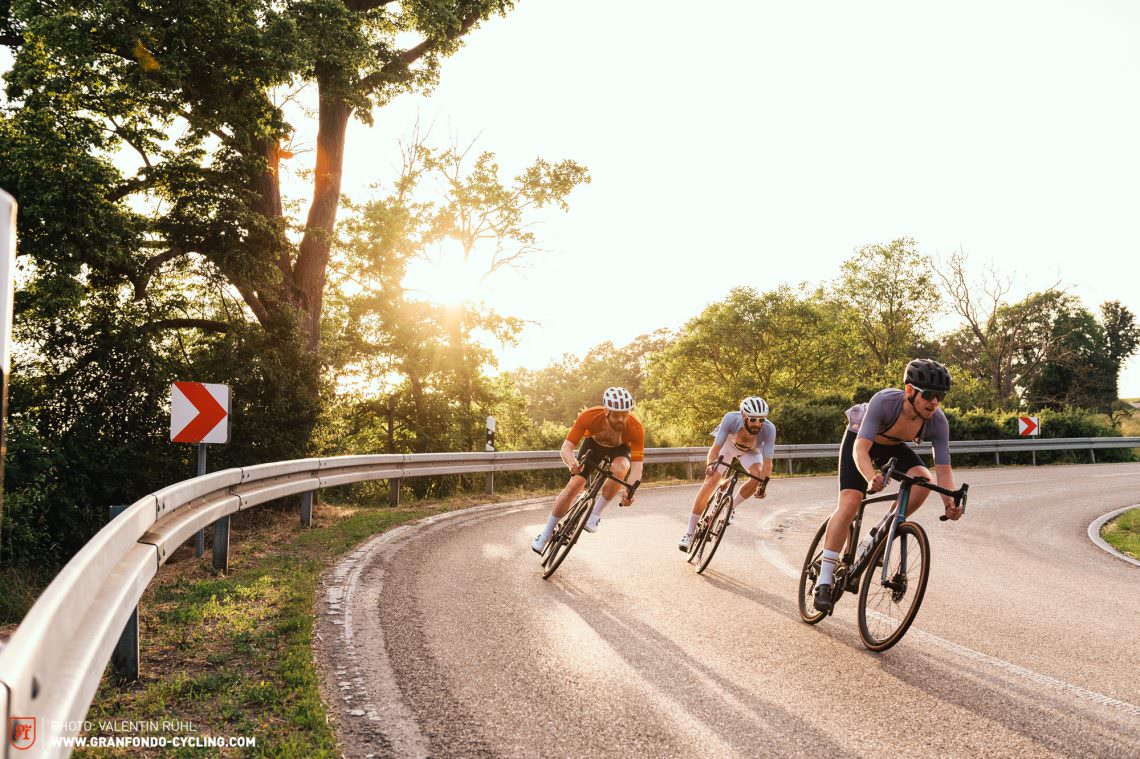
Comfort is a question of speed
In our group test, we found that the five fastest race bikes of the 2021 season absorbed vibration sufficiently for the most part, but we’d be hard-pressed to call it real comfort. Amongst other things, this is due to these bikes being developed for significantly higher speeds and the associated higher forces. However, during our timed segment rides, we had the bikes at speeds that a large proportion of you will also be riding at over a longer period of time. So, in other words, we were often simply too slow to coax the bikes to their highest possible levels of comfort. Outside of our timed runs, we also pushed the bikes to higher speeds. In doing so, we noticed four things.
Firstly, what seems boneshakingly hard at 15 km/h may be just right at 45 km/h. But nor is that always the case. Thus, secondly, there is a difference between healthy racing stiffness and stubborn solidity. Not every race bike becomes more comfortable just because you ride it faster. Thirdly, race bikes are made for racing – that requires a minimum level of stiffness. In turn, when you talk about a comfortable race bike, it’s relative and fundamentally different to a comfortable all-road bike. Fourthly, the way you sit on a bike also has an impact on its perceived comfort. At low speeds, you often sit in the saddle with less body tension and are shaken about by every bump. If, on the other hand, you step on the gas and put the bike in situations where its damping concept comes into play, then your body tension is usually higher too, dissipating shocks more evenly across all points of contact with the bike. So, you should ask yourself whether you have the necessary power in your legs to keep these bikes moving where they’re happiest, or whether you only want to ride them for the prestige and can accept the lack of comfort if you’re not riding them hard.
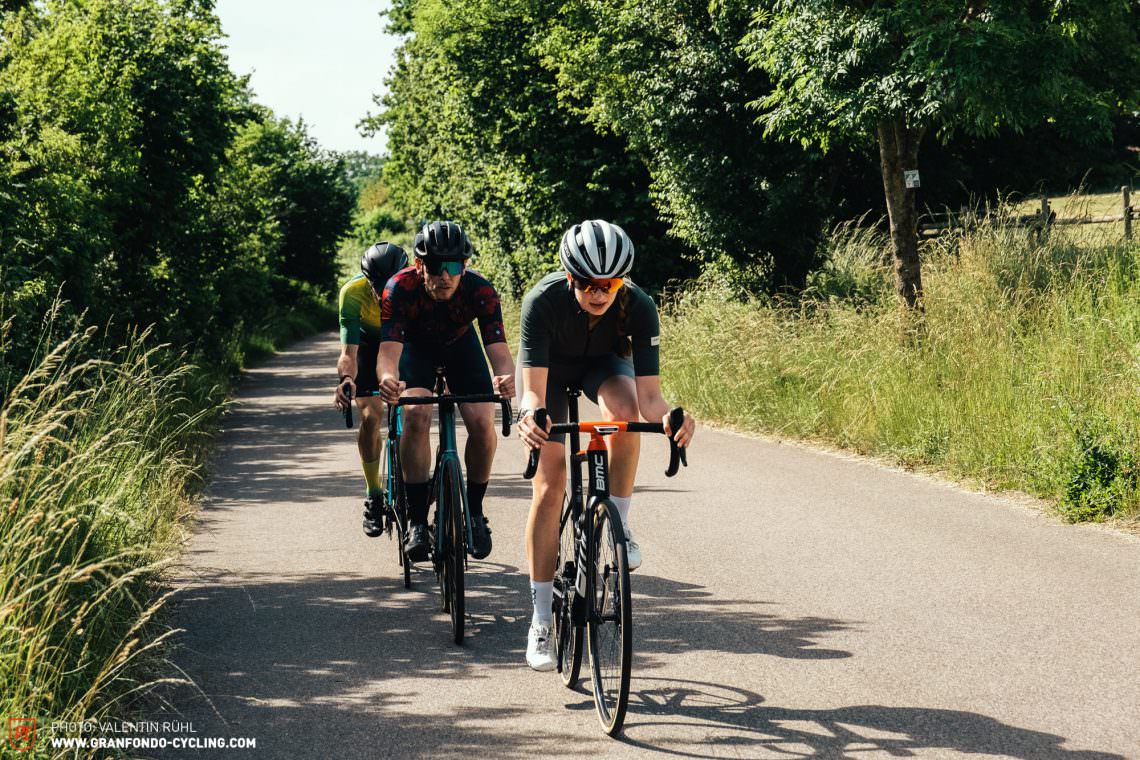

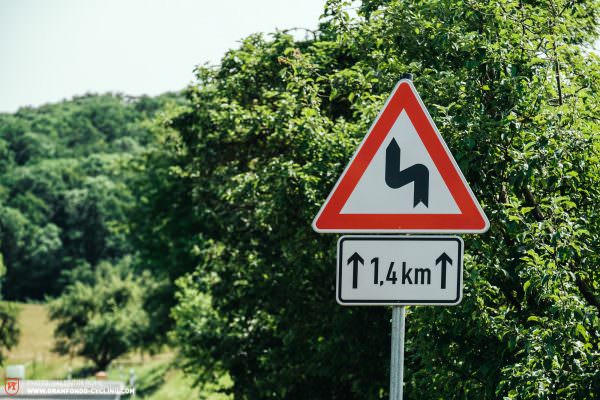
And how will comfort develop? It’s worth looking into the past: both the Tarmac SL7 and the Trek Émonda SLR 9 have lost comfort compared to their predecessors in favour of aerodynamics and weight. As development continues, it is to be expected that manufacturers will be able to add significantly more comfort to the equation again in the future while keeping the same level in terms of weight and aerodynamics.
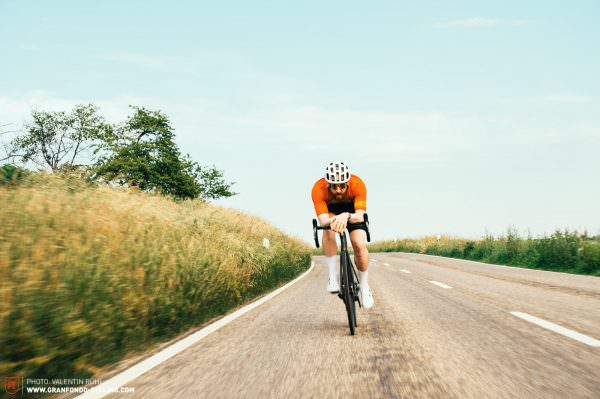
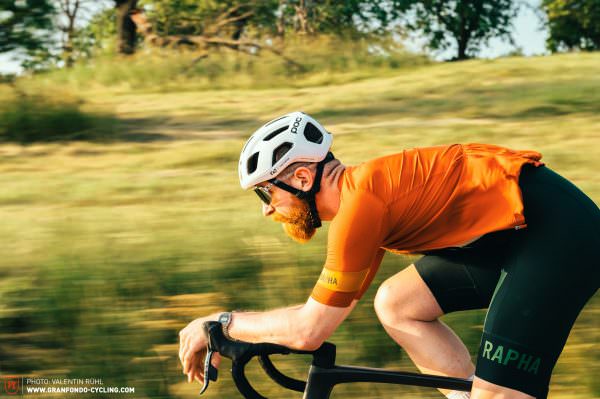
Race bikes need an experienced hand at the bars
Race bikes shouldn’t just be fast, but also need to convince with particularly agile handling. To achieve this, they differ from most other bikes in terms of their geometry – steeper steering angles, shorter chainstays and head tubes, to name just a few. The balancing act needs to toe the line between agility and smoothness and not overdo any one thing. An immediate and direct response is of little use if the bike is also super nervous in a straight line and wobbles around after every little bump in the ground. Race bikes with balanced handling combine straight-line stability with direct and precise steering. Even a race bike that combines these things perfectly handles much more directly than bikes with more relaxed geometry. This can come as quite a surprise to inexperienced riders and race bike newcomers. The scope for mistakes and erroneous input at the bars is much smaller here. But it is even smaller on race bikes that aren’t optimally balanced, which tend to be overly twitchy when steering. But why is that?

Speed has a great influence on the smoothness of a bike due to the inertia of the rotating components. Have you ever tried to steer through a tight corner at 40 km/h on an endurance bike? Then you know that this requires some power and strong input. Lack of precision often makes things even more complicated. On the other hand, endurance bikes generally handle more smoothly at lower speeds. With race bikes it’s the other way round, they are designed for high speeds. What can seem nervous for newcomers at low speeds helps these bikes to be steered agilely and precisely through tight corners at high speeds.
Overall, a trend is identifiable. The best race bikes are not only fast but also shine with intuitive handling, regardless of their speed. Nevertheless, we recommend all race bike newcomers to approach the handling of these machines carefully and to find their limits gradually. On your first rides, look for wide roads with a good surface, moderate gradients, relaxed corners and little traffic. Don’t go straight down an alpine pass with potholed asphalt.
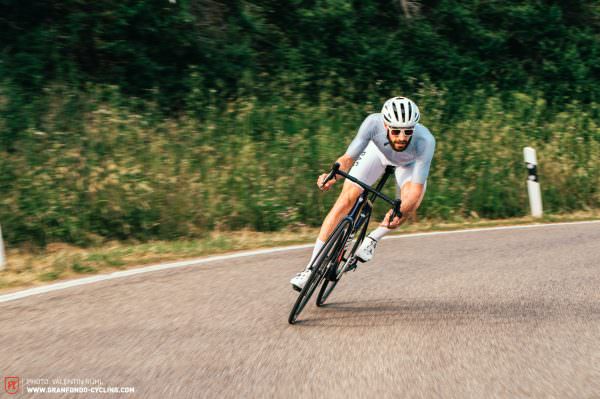
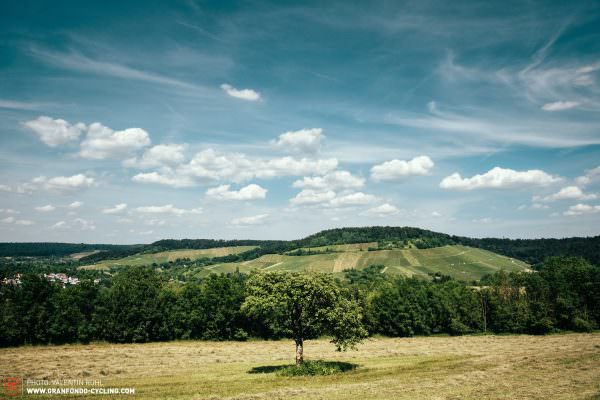
The UCI is the limit
As the regulatory body in cycling, the UCI has made the safety of cyclists and the fairness of racing its top priorities. To ensure this, not only are certain riding positions banned but the weight, geometry and tube shapes of the bikes are also specified. For example, road bikes used in UCI races have had to weigh at least 6.8 kg since 2000. This is to prevent manufacturers or teams from sacrificing structural integrity in favour of weight and thus increasing the likelihood of failure or damage. In addition, the tube shapes are also regulated and must adhere to certain limits. Endlessly deep aerofoils or super slim tubes can’t be used in the pursuit of ultimate aerodynamics.
Traditionally, a bike tuned for the best aerodynamics would have been somewhat heavier due to its shaping, whereas for mountainous routes, riders would strive for a bike that was as light as possible. However, nowadays, manufacturers are usually able to fully exploit the maximum permitted tube shapes for optimal aerodynamics and still come in under the UCI minimum weight. This development has given rise to the category of all-round race bikes, which impress with their low weight and first-class aerodynamics. But are the UCI limits still up to date? Many manufacturers can now build bikes that are lighter than 6.8 kg and still meet all safety requirements. Often, additional weights are added in the bottom bracket area to make up the limit, which benefits the weight distribution and the centre of gravity, but in fact is just unnecessary weight.

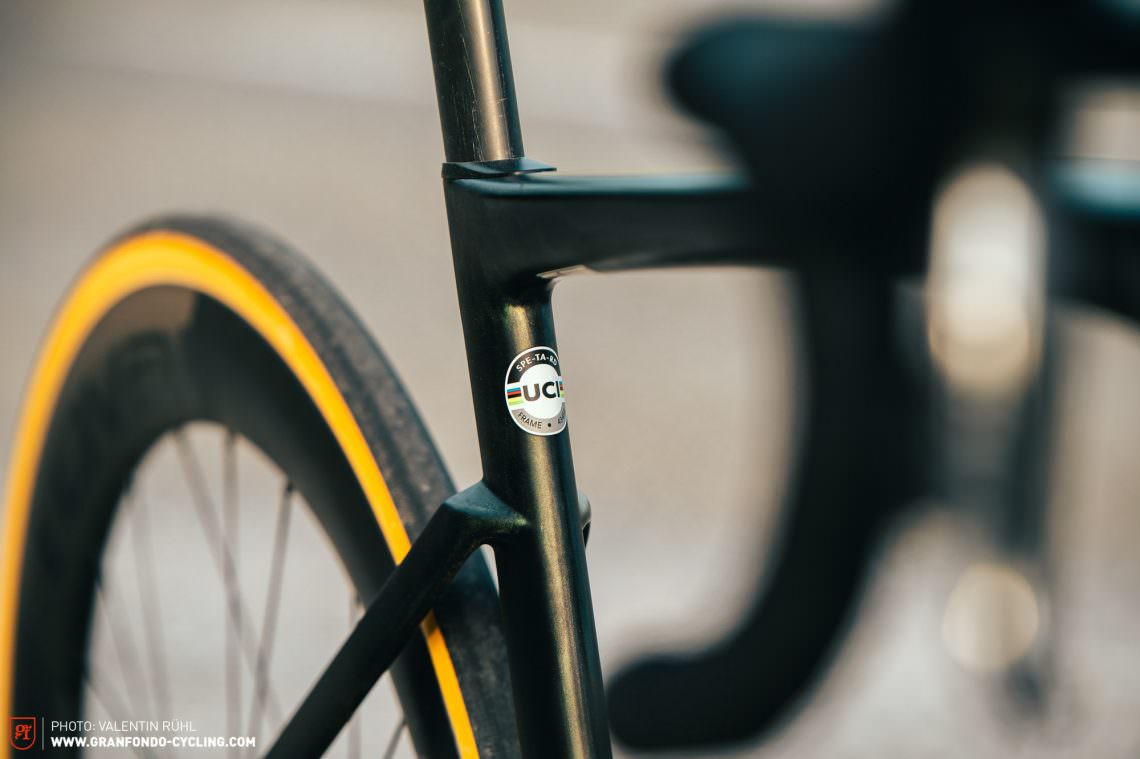
When it comes to aerodynamics, we can see the extent of what is possible in triathlon, which is not regulated by the UCI. Here, bikes with wild aerodynamics are used to deliver maximum speed. In order to allow their teams and riders to use them in UCI races, most bike brands understandably build frames that comply with UCI rules. Only a few also offer unregulated frames that push what is technically possible. For non-professionals like us and for all those who don’t race UCI-sanctioned events, this means that in theory, bikes that are much better suited to our purposes and range of uses are conceivable, being both lighter or more aerodynamic. We think it’s a shame that the UCI has such a big influence on the sport outside of the racing scene and wish we could see two things: the relaxation of UCI rules and more manufacturers bringing bikes onto the market that don’t comply with the UCI limits but deliver the best possible package for the masses.
Weight is a constant, aerodynamics is everything
While we’re on the subject of weight and aerodynamics, we might as well put the two aspects into perspective. As already mentioned, most modern race bikes reach the UCI minimum weight relatively easily or are only slightly above it. Low weight only plays a significant role when going uphill – the steeper, the more important. But it takes a back seat on all other terrain. After all, at 15 km/h or more air resistance quickly becomes the biggest force you have to fight against. The faster you get and the flatter the terrain, the less important weight is because air resistance increases as the square of your speed.
Even on mountainous routes, the importance of weight decreases, as good aerodynamics on fast downhill sections can compensate for the losses of increased weight on the ascent. In addition, many climbs are often ridden at well over 15 km/h, especially by ambitious or fit riders. Therefore aerodynamics plays an important role for lots of uphill riding too.
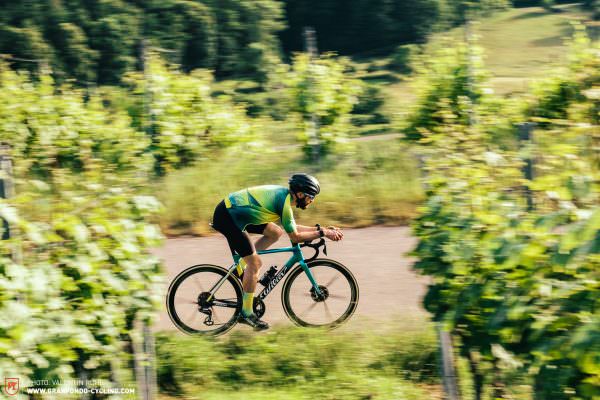
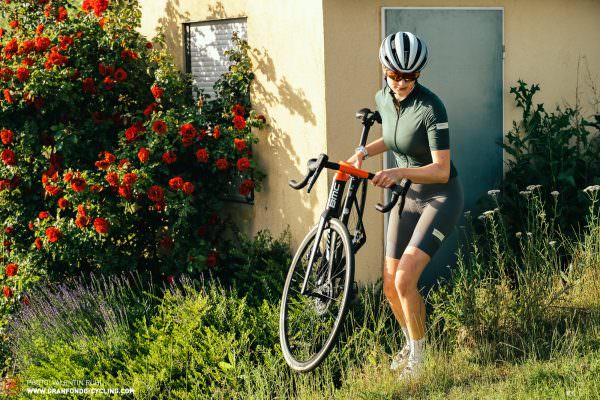
But it’s not quite so simple. It’s not too hard to deal with or design for a steady wind from the front, but often, more unpredictable wind conditions comprising gusts, different angles of attack and speeds complicate matters. That also includes the speed at which you move – slowly uphill and quickly downhill. The true aero kings handle all of these conditions while remaining fast and controllable. While most manufacturers have always paid attention to low weight, aerodynamics has only come more into focus in recent years, despite the fact that, as our comparison test also showed, it often plays a more important role.
A fast bike makes you fast, training makes you faster
So much for the bikes, now for you! With a weight around the UCI limit of 6.8 kg, modern race bikes only make up a fraction of the overall weight of the bike and rider system. Additional weight savings on the bike are usually expensive and only a few (hundred) grams, if that. Even if the rider is fit and trained, they’ll usually be able to lose more weight and at a lower cost than it is possible to do from the bike. The situation is similar in terms of aerodynamics. Of the total air resistance experienced, only 25 % comes from the bike, while the rider on top accounts for 75 %. If you can maintain a more aerodynamic position for longer, you will be faster for longer – all without any additional effort. Good ergonomics and a minimum level of compliance will help you achieve this, making them essential.
So if you don’t just want to ride the fastest bikes but also want to get the most out of yourself, then it’s worth investing both in a bike fitting and in yoga lessons. The old saying “You get faster by riding fast.” is only valid to a limited extent, but the basic idea still holds true. The more and better you train, the faster you will become. And this is doubly true because increased training not only improves your physical condition but usually also reduces your weight. So investing in expensive bikes and parts is only half the battle. The bigger part of getting faster comes from the training itself, no matter which bike you’re riding. However, we recommend that you don’t take training as seriously as the pros. Real life doesn’t leave time for 7 hours of training a day, so don’t mess it up with your loved ones for a marginal FTP improvement. With this in mind, we can put our desire to ride the fastest bikes on the planet in context. We might not have the legs of Tadej Pogačar, but it doesn’t mean we can’t want nice things. #dontbuyupgrades #rideupgrades 😉
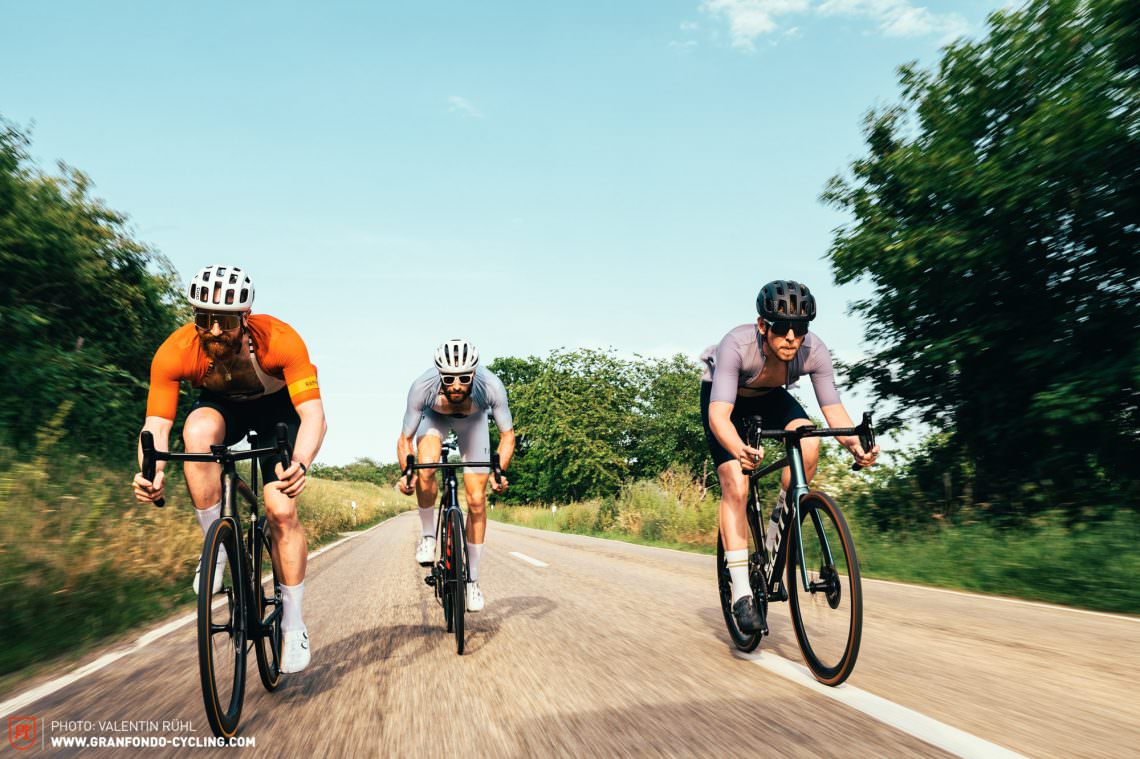
If you want to be fast, you have to suffer
The bad news first: you won’t be fast without pain! Sure, the fastest race bikes on the planet can save you a few watts and make you a little faster for the same power. But what are a few watts? Let’s say your steady-state output goes up to 200 watts and you can pedal at 300 watts for an hour. It’ll be pretty exhausting to maintain 250 W for an extended time. Nevertheless, the extra 50 W you ride above your comfort zone will make you significantly faster than the few watts you save by riding one of the fastest race bikes. Conversely, this means that someone with the same power as you, yet willing to dig deep and bathe in the pain, will always be faster than you, if you won’t do the same. Even if you ride one of the fastest race bikes and the other person rides an old bike. So to avoid being left behind or overtaken, there is only one way. You have to go deep – deep into the pain zone. Now for the good news: the deeper you go, the faster you’ll be and the quicker it will be over. And of course, the more the aero and weight advantages of the fastest race bikes come into play. Your pain will be rewarded.
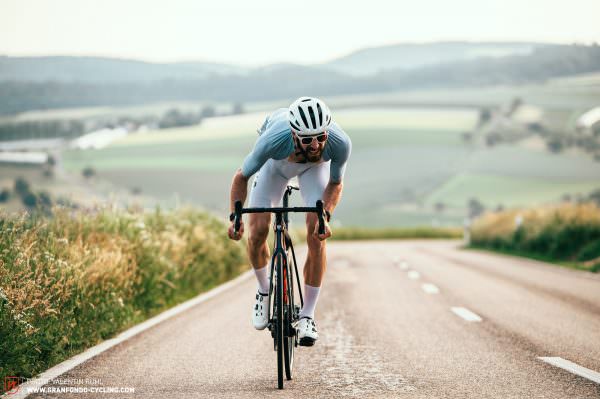
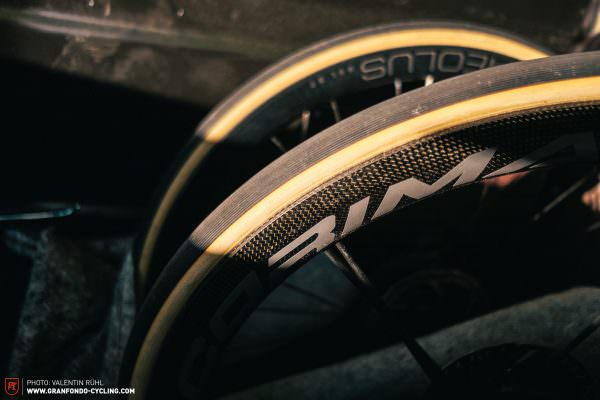
Tan walls are out
Tan wall tires came back into fashion a few years ago and continue to be popular. Most manufacturers are launching models fitted with them. But aren’t we all individualists? Don’t we always want to stand out a little from the crowd? When all five bikes in the group test come with tan wall tires, it’s a good time to jump off the bandwagon and swim against the tide again. 2021 is the year to say, “Goodbye tan walls!” It’s time to go back. Back to black. Classic. And that doesn’t just apply to the fastest race bikes, but to everything two-wheeled that’s sitting around in your basement.
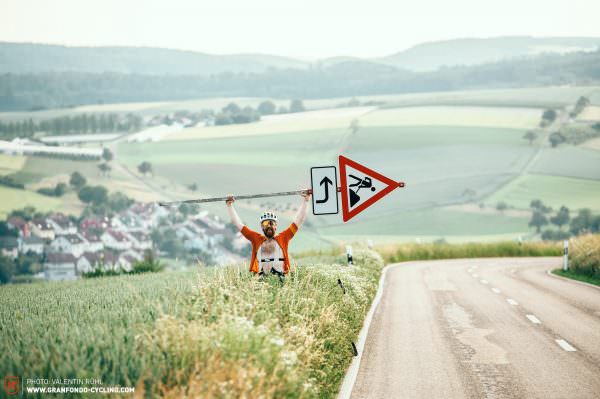
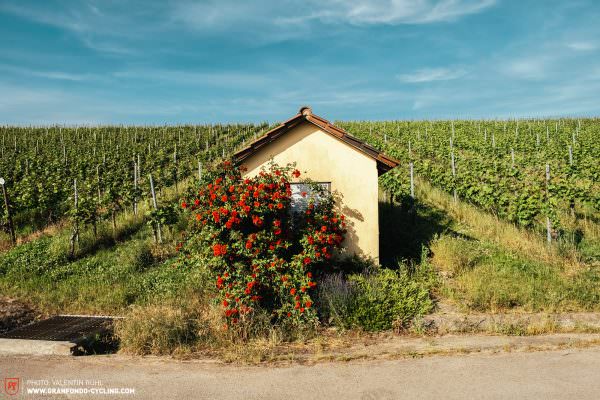
These findings come directly from our latest race bike group test. Click here to find out what is 2021’s best road bike for racing.
Did you enjoy this article? If so, we would be stoked if you decide to support us with a monthly contribution. By becoming a supporter of GRAN FONDO, you will help secure a sustainable future for high-quality cycling journalism. Click here to learn more.
Words: Photos: Valentin Rühl







